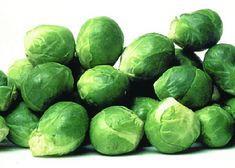
Brussels sprout growers are hoping for a merry Christmas this year, with high quality and strong demand.
According to Lincolnshire grower and president of the Brussels Sprout Growers’ Association, Roger Welberry, shoppers are already stepping up their purchases of the traditional winter vegetable.
And supermarket demand for his sprouts from Holme Farm, Boston is running three times ahead of normal this year, he claimed.
“We believe the promotional work has paid off in getting people to try sprouts again. Once they realise the quality and taste of today’s buttons is so much better than their childhood experiences, they keep coming back for more,” he said.
Welberry attributes the revived popularity of sprouts to the development of sweeter varieties and improvements in their shelf-life and appearance.
The dry weather in June and early application of fungicide Amistar has helped keep the crops clean and disease-free this year.
But the pressure will be on to keep disease at bay if the mild wet weather continues, Welberry warned.
He claimed Alternaria would be the biggest threat, resulting in dark leaf spots on the buttons, which could seriously affect visual and keeping quality and ruin the chance to cash in on a promising start to the season.
Applications of Plover would be the best combative measure, he claimed.
Nevertheless, Welberry said supermarket promotions planned for the end of November should exploit the good yields of early season varieties, boosting Christmas demand for the Helemus variety, which looks to be top quality.
Syngenta is advising growers that air-induction nozzles and reduced water volumes could significantly improve disease control over conventional flat-fan nozzles.
According to the company’s application specialist, Tom Robinson, air-induction nozzles produce larger, slower-moving droplets, which are better absorbed by the foliage than the finer droplets from flat-fan nozzles.
Robinson explained studies had also indicated that crops retain a greater amount of spray with lower volumes of water.
And with cooler weather inhibiting further growth in the plants, precise targeting of fungicides is even more important, he advised.
“The best results with Plover will be achieved with good coverage of the buttons and leaves, before disease is established in the crop - and repeated at 14 to 21 day intervals, depending on disease pressure,” he said.



